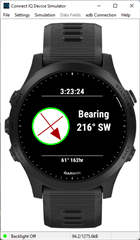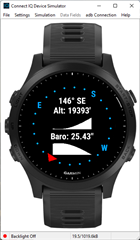I’m been using tskf’s offline gps map for a while and I think it’s a brilliant data field but I would like to see if I could add a heading arrow (the code is open source) as I feel it would be perfect for me then.
The datafield does show your position as a red dot in the middle of the screen and appears to be generated simply by just these bits of code in the function onUpdate(dc) part of the lone MC file.
dc.setColor(0xFF0000, -1);
dc.fillRectangle(x-2, y-2, 4,4);
Not being a coder (although I have tried scratch) I have no idea if that is the case but I was wondering if it would be possible to replace that with a small heading arrow instead in the same position and if so how? I’d be very grateful for some help.
P.S: Just in case you think I might be being lazy asking like this I have tried to do it myself for a few days by looking at the samples and documentation then typing stuff out on eclipse but I can’t find myself understanding it very well.
P.P.S: I would ask tskf themselves but I don’t want to bother them seeing as the field doesn’t appear to have been updated for over a year now.



